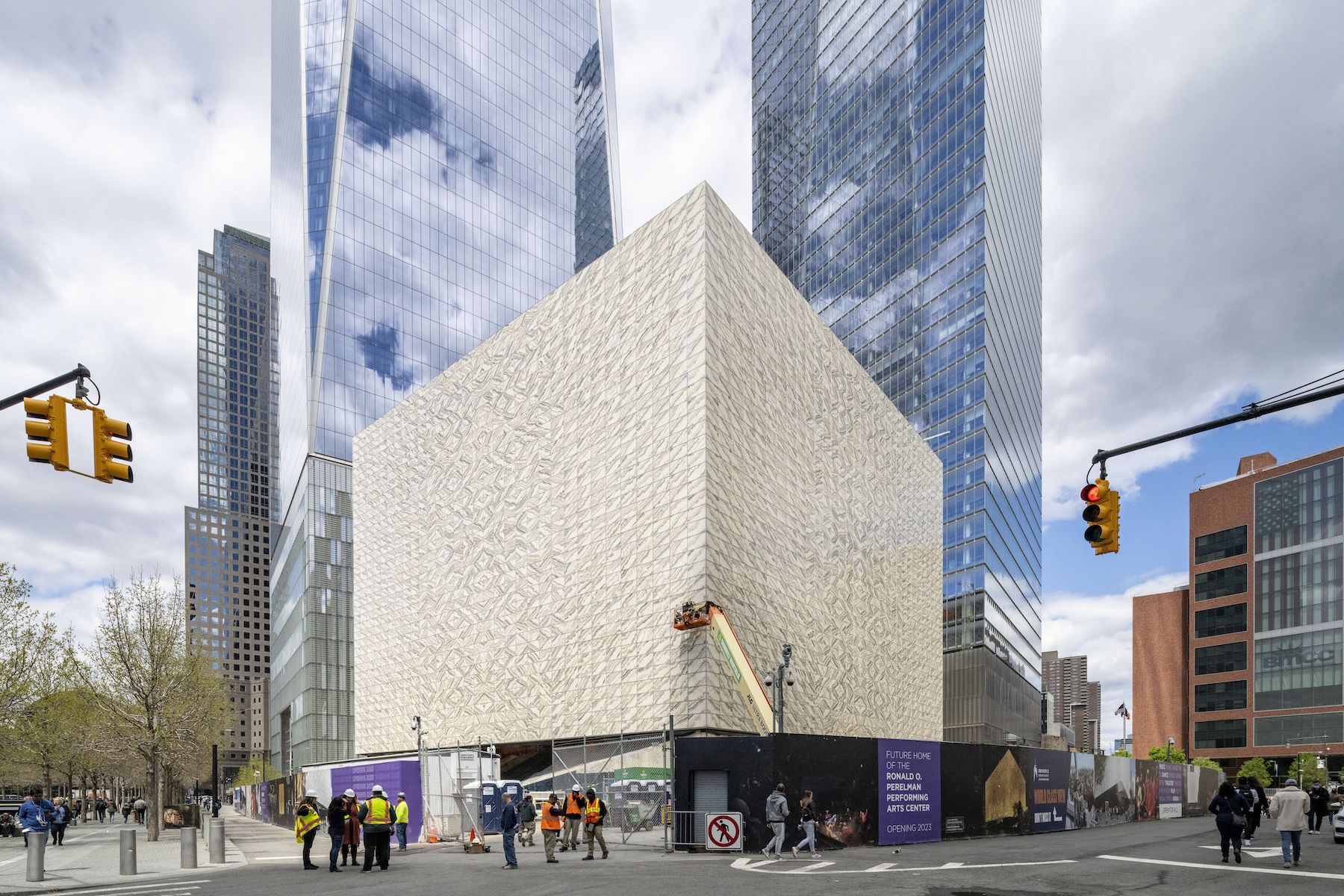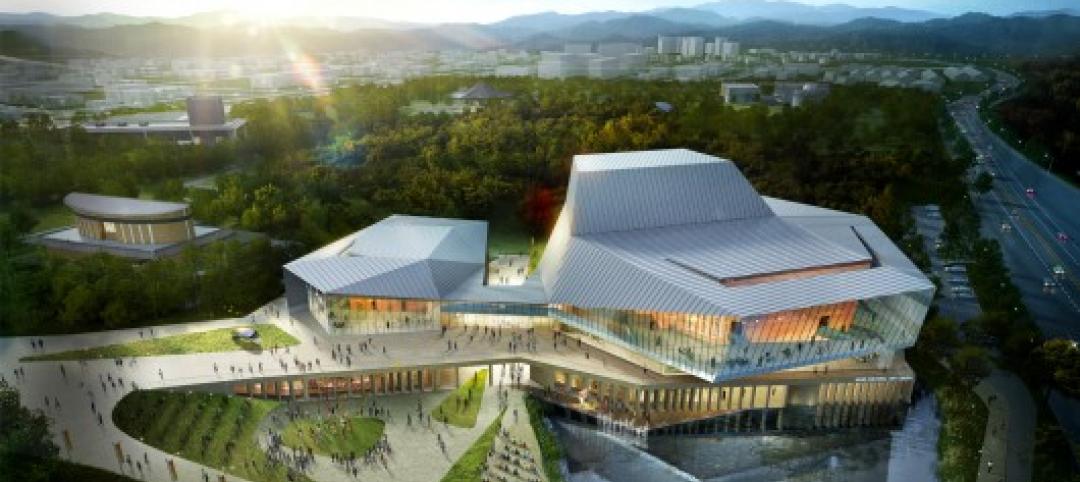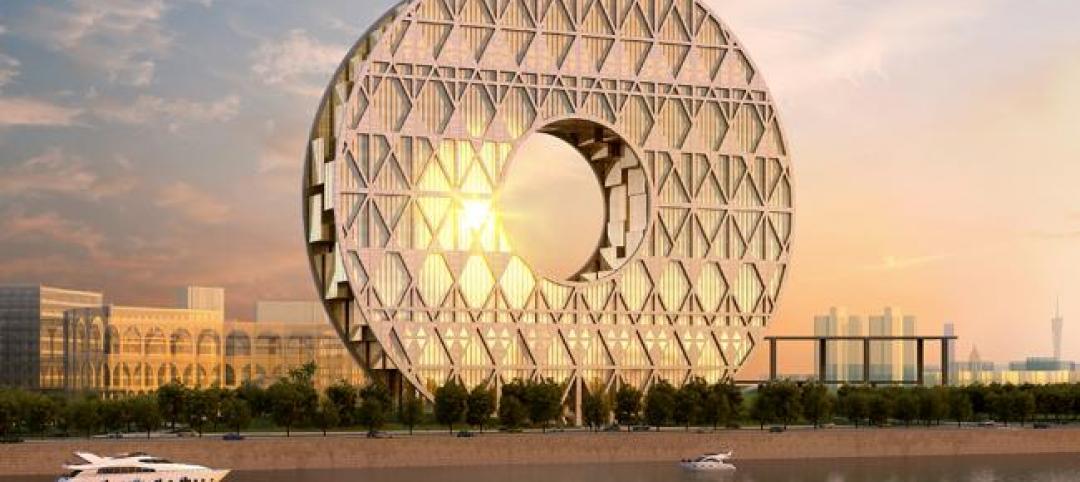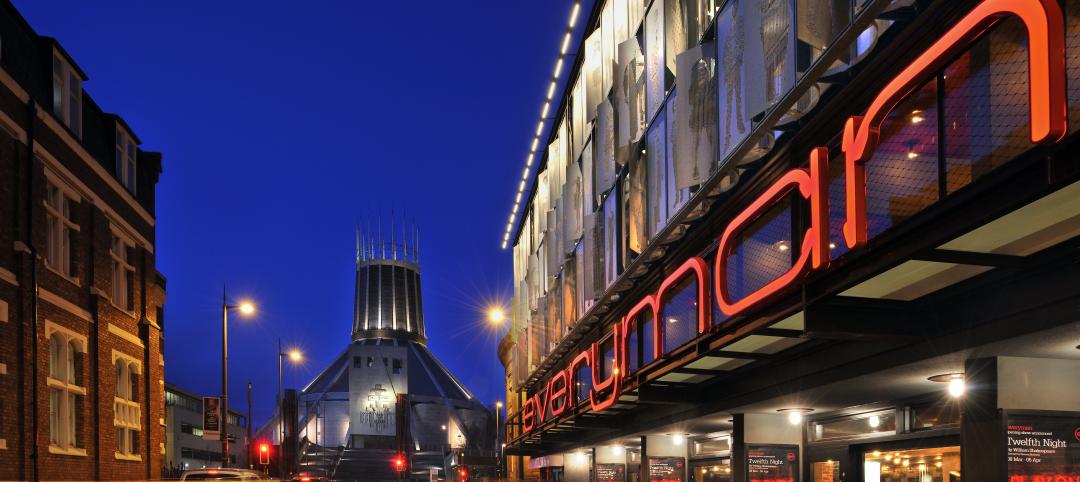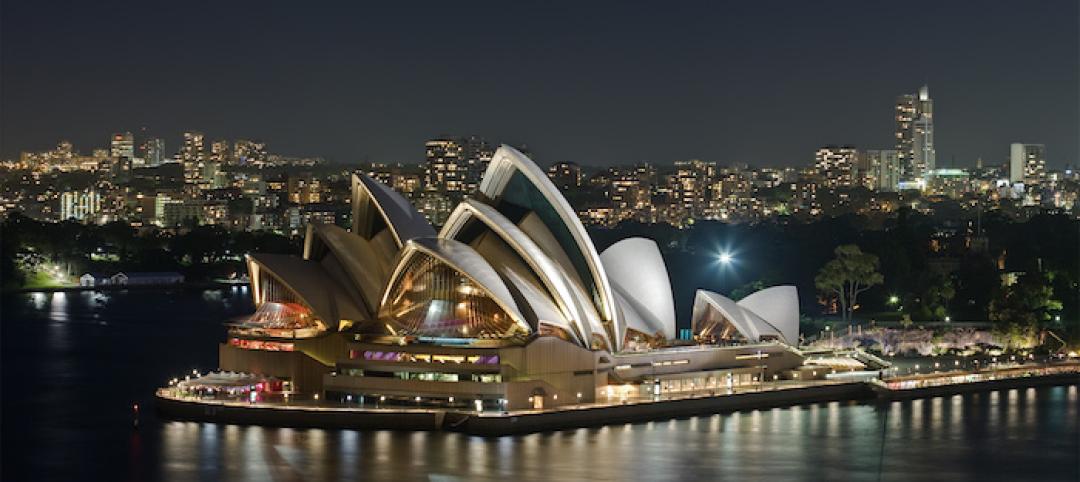The final public element for the rebuilding of the World Trade Center complex in New York City is a performing arts center that’s expected to open next September. That month will also mark the one-year anniversary of the opening of an adaptive reuse which converted what once was a greenhouse in Tarrytown, N.Y., into a flexible, 8,000-sf performance and rehearsal space, artists’ gallery and studio.
The architecture firm REX, working in collaboration with executive architect Davis Brody Bond, theater consultant Charcoalblue, and Threshold Acoustics, designed the eight-story, 138-foot-tall Perelman Performing Arts Center, located in lower Manhattan. The 129,000-sf cube-shaped PAC will provide new spaces for theater, dance, music, chamber opera, film, and media events.
Its three theaters—the John A. Zuccotti Theater, that can accommodate 450 seats; the Mike Nichols Theater, with a 250-seat capacity; and the Doris Duke Theater, which can have up to 99 seats—can be adjusted or combined into 10 different configurations.
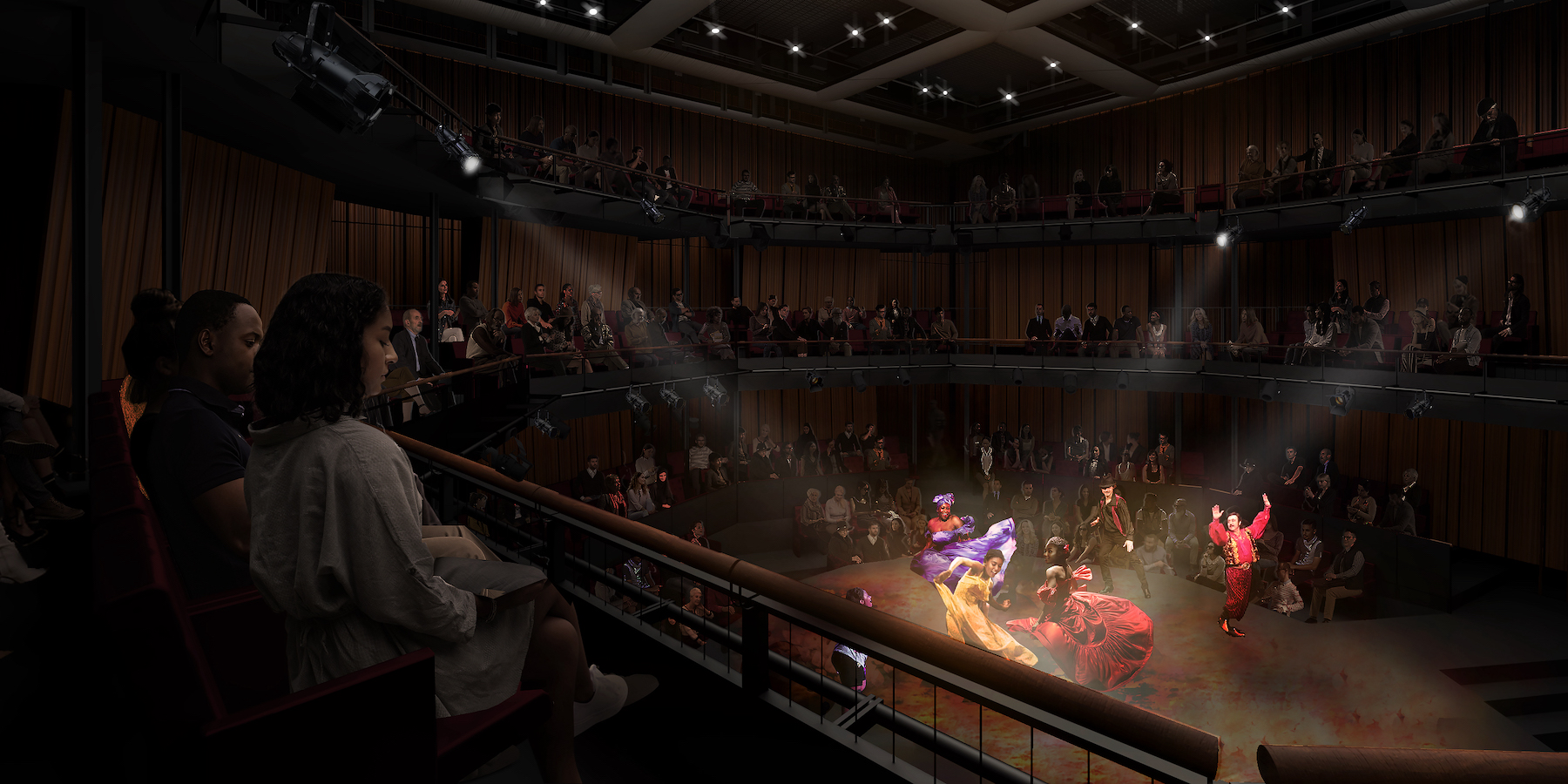
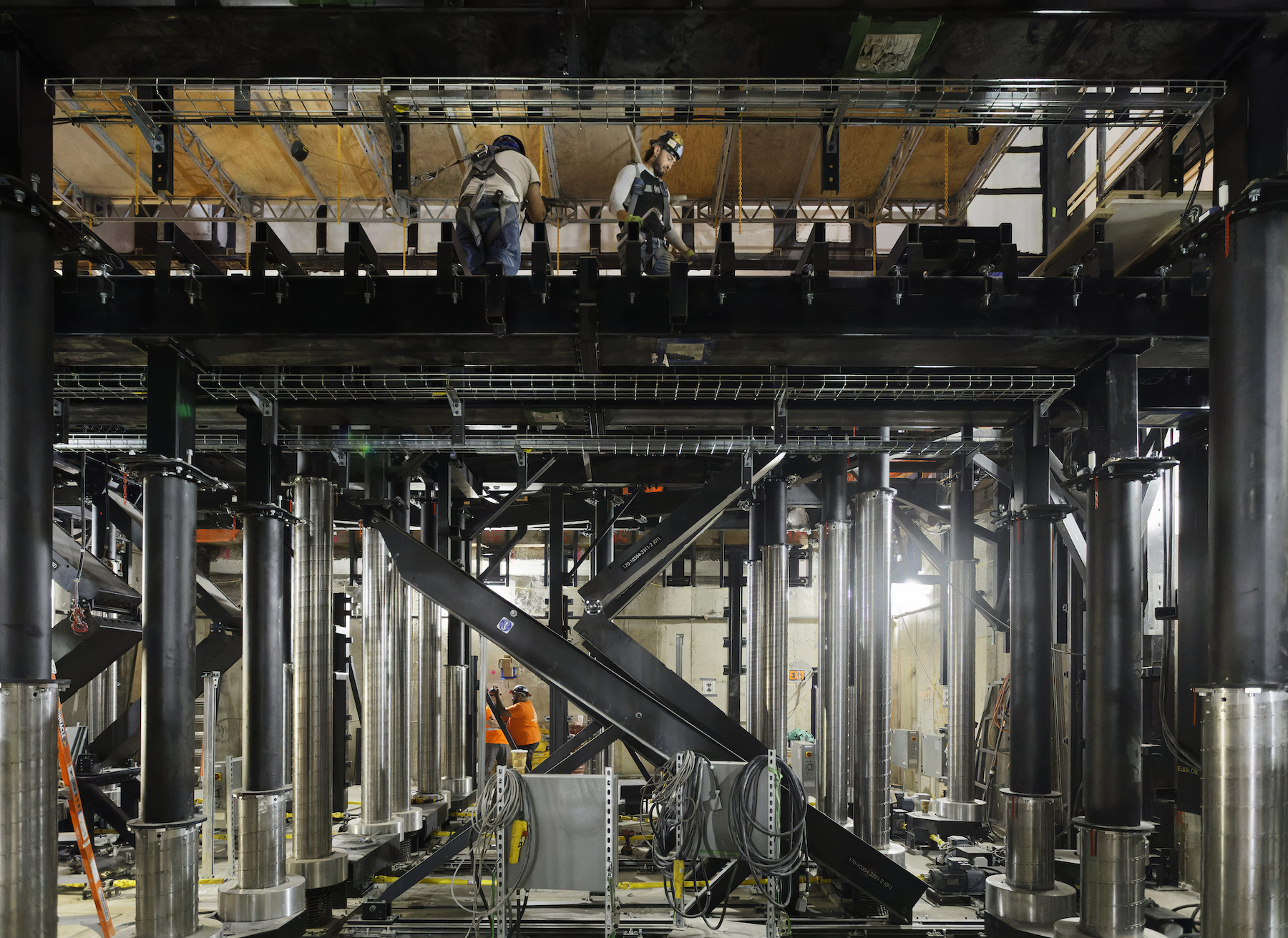
The PAC will be adjacent to the World Trade Center Oculus and Transportation Hub. Because it is being built over an existing subway and rail complex, the project’s structural engineer Magnusson Klemencic Associates devised a system that would support that building’s mass, consisting of seven mega columns through the existing infrastructure that hold aloft a belt-truss structure within which the PAC’s auditoria “float.”
The building’s exterior is wrapped with nearly 5,000 5x3-ft marble panels from Portugal, each weighing 295 lbs. (Front is the façade consultant.) Inside, the PAC is organized into three levels: a public level accessible by grand staircase or elevator that encompasses the lobby concourse and stage; an “artists” level with dressing rooms, green rooms, and wardrobe areas; and a “play” level for the three theaters and rehearsal space.
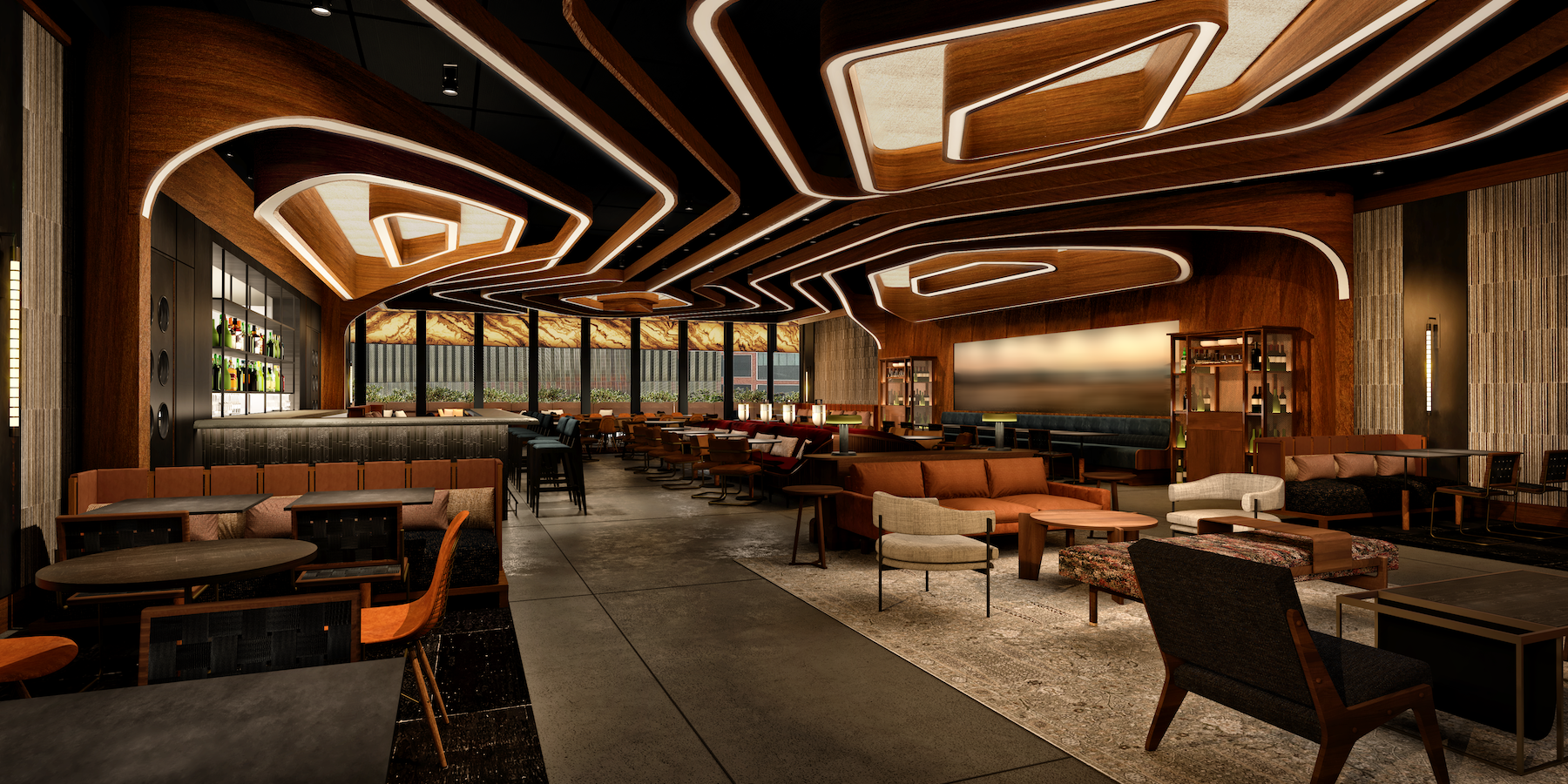
Rockwell Group designed the building’s lobby and restaurant concept restaurant. The project’s estimated cost is $500 million. Its building team includes Sciame (CM), ARUP (circulation consultant), Atelier Ten (sustainability consultant), and Wilson Ihrig (noise and vibration consultant)
From greenhouse to green performing arts center
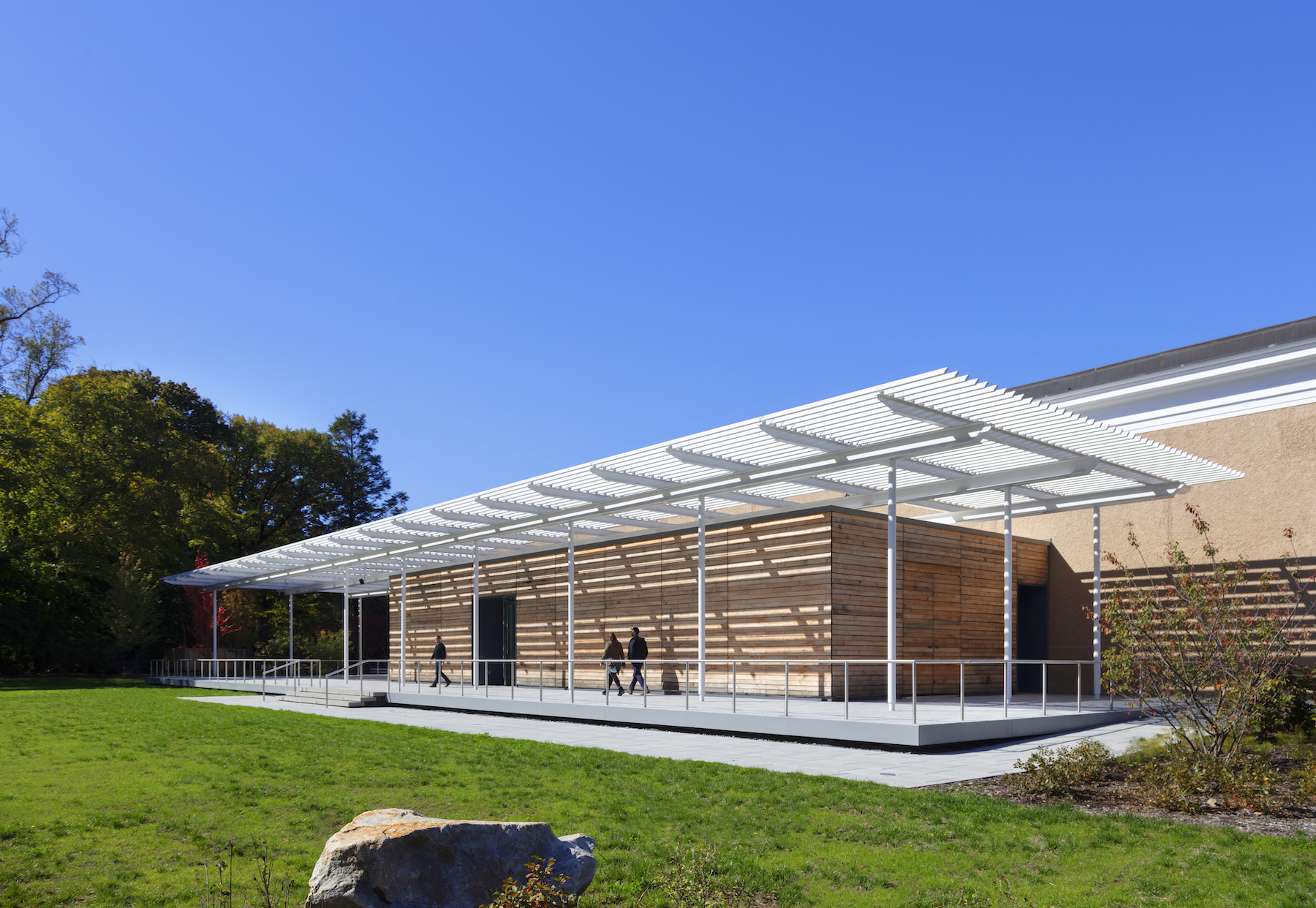
Pocantico Center, the 216-acre former Rockefeller family estate in Tarrytown, housed John D. Rockefeller’s historic Orangerie, an orange tree greenhouse with 26-ft-high ceilings, that was opened in 1906.
The Orangerie had long been dormant when the Rockefeller Brothers Fund hired the architecture firm FXCollaborative to rehabilitate the building into a multidisciplinary arts center that would also be a model for sustainable design, and inclusion.
This adaptive reuse, now called the David Rockefeller Creative Arts Center, “is rooted in supporting the creative process across artistic disciplines,” said Brandon Massey, AIA, LEED GA, Senior Associate at FXCollaborative, in a prepared statement. This renovation, at a cost of $26 million, was completed within the guidelines of the National Trust for Historic Preservation. (Li Salzman Architects was the project’s historic preservation consultant.)
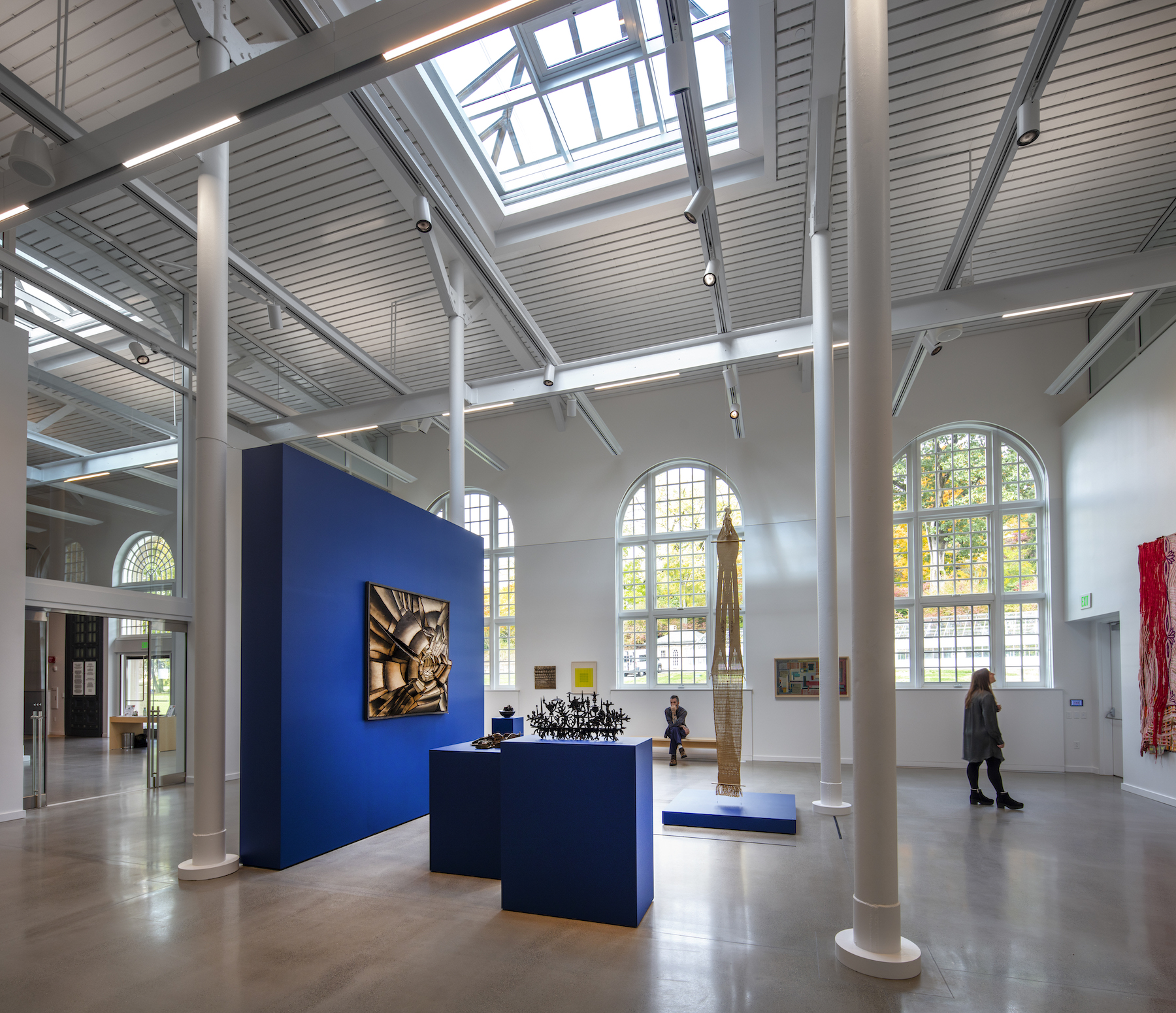
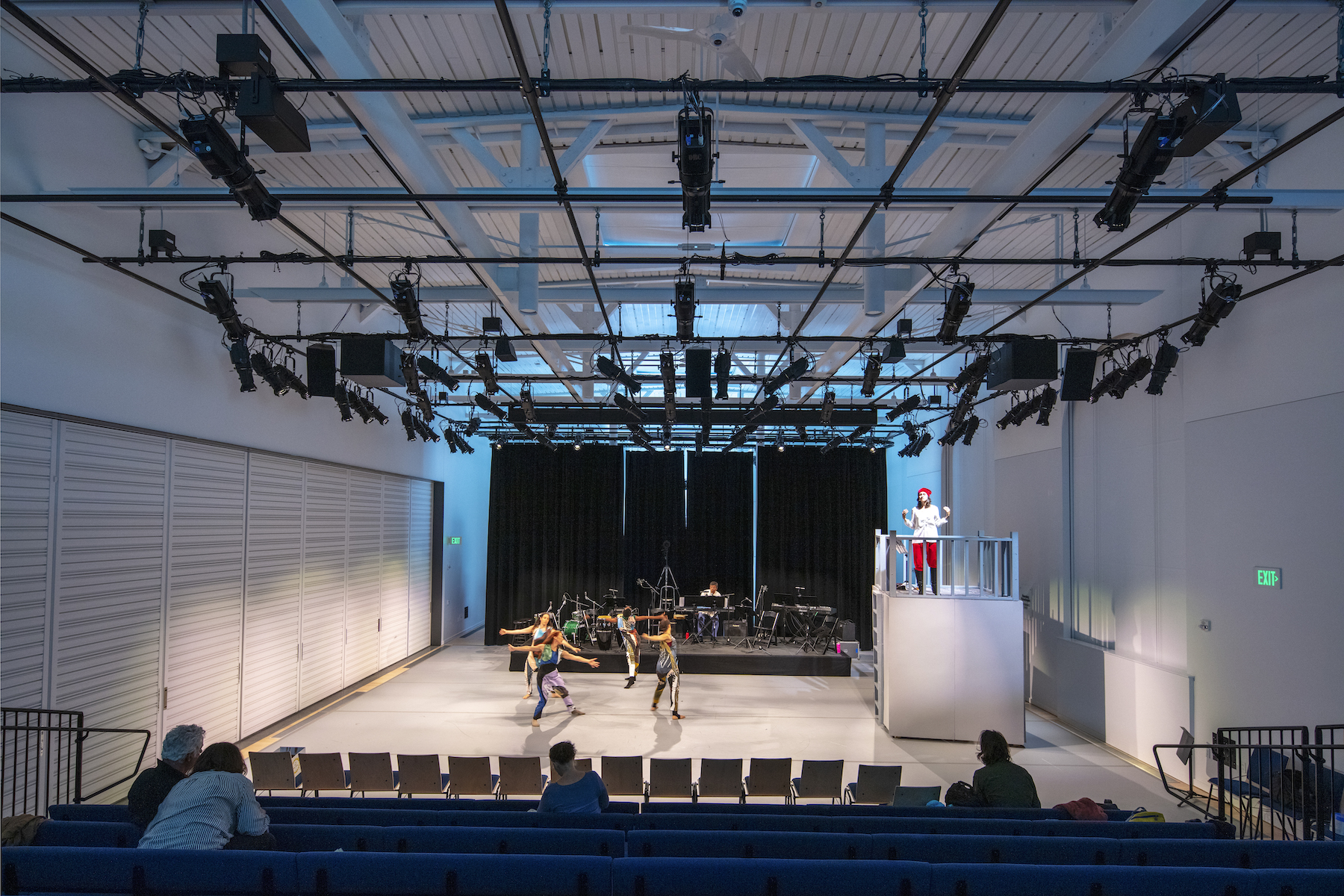
The reno added concrete slab flooring and sectioned off different areas of the building’s interior for specific performance or installation spaces. The building team added stage and rehearsal studios that can pivot 90 degrees. Also added were 40-ft-wide doors in the back of the building.
The design and construction aspired the building to achieve net-zero energy performance and LEED Platinum certification. The building’s green features include energy efficient windows, solar panels, and rainwater recapture.
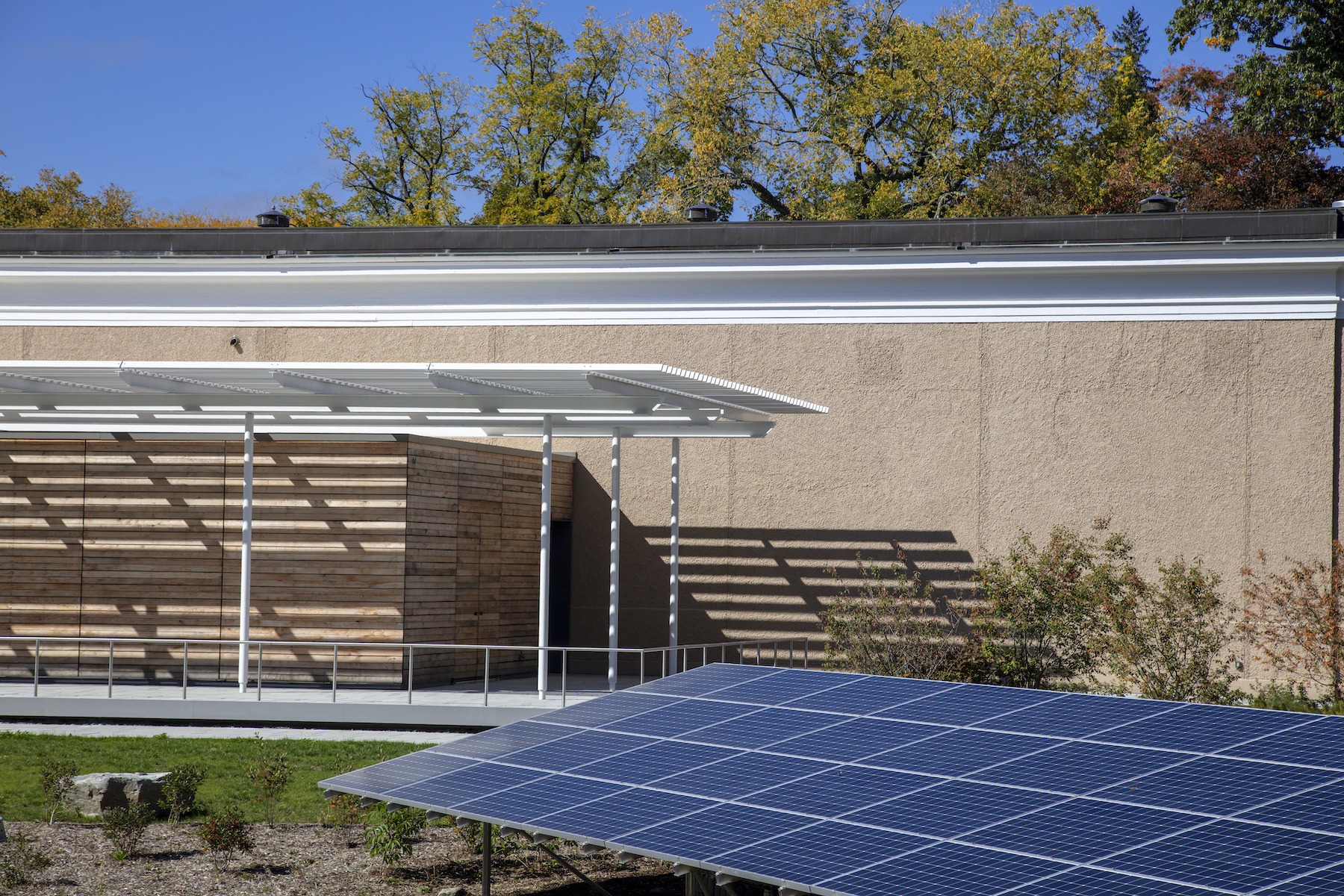
The building team on this project included York Construction Corp (CM), Silman Structural Engineers (SE), Langan Engineering (CE), Altieri Sebor Wieber (MEP/FP), and Envoie Projects (owner’s rep.).
Related Stories
| Nov 18, 2014
Fan of the High Line? Check out NYC's next public park plan (hint: it floats)
Backed by billionaire Barry Diller, the $170 million "floating park" is planned for the Hudson River, and will contain wooded areas and three performance venues.
| Nov 17, 2014
'Folded facade' proposal wins cultural arts center competition in South Korea
The winning scheme by Seoul-based Designcamp Moonpark features a dramatic folded facade that takes visual cues from the landscape.
| Oct 23, 2014
China's 'weird' buildings: President Xi Jinping wants no more of them
During a literary symposium in Beijing, Chinese President Xi Jinping urged architects, authors, actors, and other artists to produce work with "artistic and moral value."
| Oct 20, 2014
UK's best new building: Everyman Theatre wins RIBA Stirling Prize 2014
The new Everyman Theatre in Liverpool by Haworth Tompkins has won the coveted RIBA Stirling Prize 2014 for the best building of the year. Now in its 19th year, the RIBA Stirling Prize is the UK’s most prestigious architecture prize.
| Oct 16, 2014
Perkins+Will white paper examines alternatives to flame retardant building materials
The white paper includes a list of 193 flame retardants, including 29 discovered in building and household products, 50 found in the indoor environment, and 33 in human blood, milk, and tissues.
| Oct 15, 2014
Harvard launches ‘design-centric’ center for green buildings and cities
The impetus behind Harvard's Center for Green Buildings and Cities is what the design school’s dean, Mohsen Mostafavi, describes as a “rapidly urbanizing global economy,” in which cities are building new structures “on a massive scale.”
| Oct 12, 2014
AIA 2030 commitment: Five years on, are we any closer to net-zero?
This year marks the fifth anniversary of the American Institute of Architects’ effort to have architecture firms voluntarily pledge net-zero energy design for all their buildings by 2030.
| Oct 2, 2014
Budget busters: Report details 24 of the world's most obscenely over-budget construction projects
Montreal's Olympic Stadium and the Sydney Opera House are among the landmark projects to bust their budgets, according to a new interactive graph by Podio.
| Sep 24, 2014
Architecture billings see continued strength, led by institutional sector
On the heels of recording its strongest pace of growth since 2007, there continues to be an increasing level of demand for design services signaled in the latest Architecture Billings Index.


